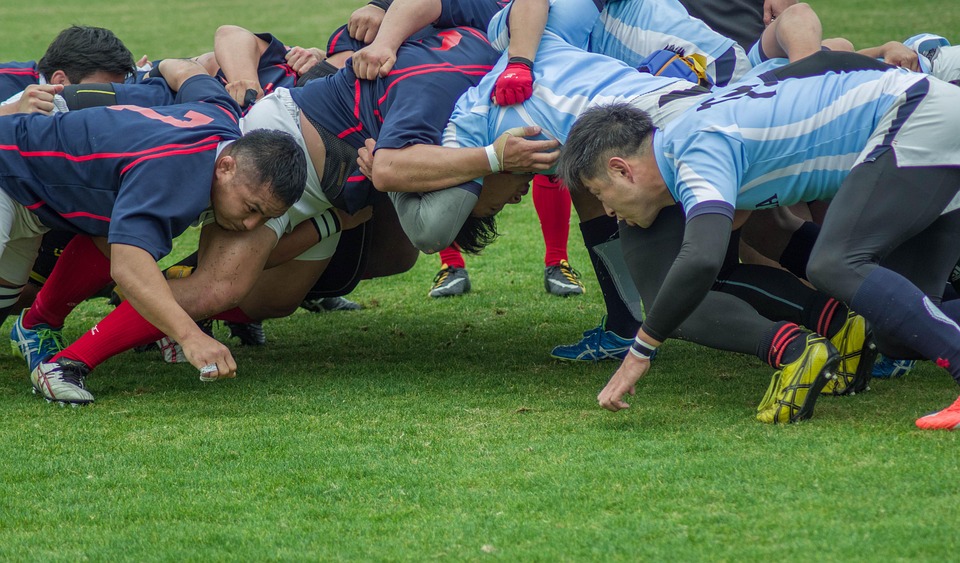Rugby is a game of strategy, skill, and teamwork, where every player has a role to play and tactical awareness is essential. Whether you’re new to the sport or looking to deepen your understanding, grasping the fundamental tactics can enhance your appreciation of the game. This guide will introduce you to key rugby tactics aimed at beginners.
1. The Basics of Rugby Positions
Before delving into tactics, it’s essential to understand the basic positions on the field. Rugby players are generally divided into two categories: forwards and backs.
- Forwards: These players primarily engage in physical confrontations, focusing on gaining possession and territory. They are generally responsible for scrums, lineouts, and rucks.
- Backs: Typically faster and more agile, backs exploit space and create scoring opportunities. They handle most of the open play and attacking strategies.
2. Understanding the Phases of Play
Rugby is divided into two main phases: attack and defense. Each phase requires different tactics.
Attack Strategies
-
Phase Play: This involves a series of multiple rucks and phases. As teams advance, they aim to create mismatches and exploit gaps in the opposition’s defensive line.
-
Set Plays: These are pre-planned moves that a team uses during scrums or lineouts. They might include specific patterns for backs running at defenders or decoy runs to mislead the opposition.
- Kicking Tactics: Different types of kicks serve various purposes, such as territory gain or creating scoring opportunities. Understanding when to employ a tactical kick can significantly influence the game.
Defense Strategies
-
Line Defense: Players line up across the field to prevent the attacking team from advancing. Communication and coordination are essential in maintaining an effective defensive line.
-
Blitz Defense: This aggressive tactic involves applying immediate pressure on the attacking team by rushing forward as soon as the opposition receives the ball. It can disrupt their flow but leaves space behind.
- Drift Defense: This approach involves players shifting laterally across the field to guide attackers towards the sidelines, creating a more manageable situation for the defense.
3. Breakdown Tactics
One of the critical aspects of rugby is the breakdown, which occurs after a tackle. Understanding tactics around the breakdown is crucial for both securing possession and preventing the opposition from doing so.
-
Rucking: Forwards work to either clear out opponents and secure the ball or contest for possession. Timing and technique are vital; players must stay on their feet and drive through the tackle area.
- Counter-Rucking: When the defending team contests the ball immediately after a tackle, this can create turnovers, leading to counter-attacks.
4. Team Shapes and Structures
Effective rugby teams establish formations that maximize strengths. Two common structures are:
-
Flat Attack: Players align in a flat formation, allowing effective passing and quick support. This shape can stretch defenses and create overlaps.
- Deep Attack: In this setup, players position themselves deeper, giving time for tactical kicking or allowing space for intricate plays to unfold. However, it can also risk losing momentum.
5. Communication and Leadership
Rugby is a highly collaborative sport. Effective communication among team members is essential, both on and off the field. Captains or experienced players usually direct on-field tactics, calling plays, and providing tactical adjustments as the game unfolds.
6. Conclusion
Understanding rugby tactics is vital for enjoying the game, whether as a player or a fan. By breaking down the various aspects of both attack and defense, as well as the critical role of positions and formations, beginners can grasp how teams strategize to gain advantages. Remember, rugby is as much about physical skill as it is about intelligent play; the interplay of tactics brings this exciting game to life. So, whether you’re heading to a match or joining a local club, keep these tactics in mind, and you’ll gain a deeper appreciation for the beautiful game of rugby.



